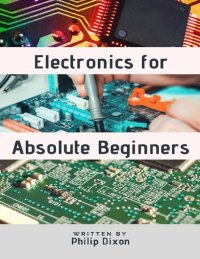
Interest in electronics gradually increased over the decades following Stoney's discovery. In 1947 the transistor was invented by William Shockley, John Bardeen and Walter Brattain at Bell Labs, which revolutionized the computer industry by replacing fragile, power hungry valves with much smaller and reliable devices. During the 1950s and 60s, computers became more powerful and smaller, eventually leading to the introduction of the home personal computer (PC) in the 1970s.
The purpose of this book is to introduce the subject of electronics to people who have no prior knowledge of the subject. If you don't know what a prototyping breadboard is, or have no idea what a resistor or diode do, then this book will help you to gain a basic understanding of what electronics components exist and what they are used for. You will also learn how to combine such components to build electronics circuits.
The book is split into two parts – the first introduces the subject of electronics, and the second contains a range of simple circuits to design and build.
The purpose of this book is to introduce the subject of electronics to people who have no prior knowledge of the subject. If you don't know what a prototyping breadboard is, or have no idea what a resistor or diode do, then this book will help you to gain a basic understanding of what electronics components exist and what they are used for. You will also learn how to combine such components to build electronics circuits.
The book is split into two parts – the first introduces the subject of electronics, and the second contains a range of simple circuits to design and build.
Download the book Electronics for Absolute Beginners for free or read online
Continue reading on any device:

Last viewed books
Related books
{related-news}
Comments (0)